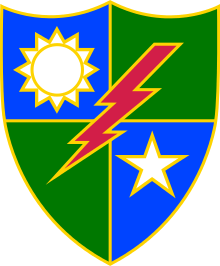United States Army Reconnaissance and Surveillance Leaders Course
United States Army Reconnaissance and Surveillance Leaders Course (formerly Long Range Surveillance Leaders Course, or LRSLC) is an elite five week school offered by the 4th Ranger Training Battalion to soldiers, Marines, sailors and airmen to train them to expert levels in reconnaissance, surveillance, target acquisition, battle damage assessment, foreign vehicle identification, and other skills. The school was originally created to serve leaders from Long Range Surveillance units (LRSU's), but is commonly attended by soldiers from U.S. Army Special Forces, 75th Ranger Regiment's Regimental Reconnaissance Company, Navy SEALs, Marine Recon,US Army LRS Companies, RSTA, Infantry Units
Need
Given the increased demand for trained, skilled, and proven reconnaissance professionals in the U.S. military, the RSLC has significantly enhanced its program of instruction, class capacity, and class frequency to meet the needs of an Army at war. Course curriculum is primarily designed to train leaders in Long Range Surveillance Units, Infantry BCT Reconnaissance Battalions, Infantry Battalion Reconnaissance Platoons, Stryker BCT RSTA Battalions, and SOF personnel. The course will continue to adapt its POI to accommodate the needs of the Army and individual reconnaissance units.
Priority
RSLC MTT priority will be given to those units requesting training for deployments in support of Operation Iraqi Freedom and Operation Enduring Freedom. Units standing up IBCT Reconnaissance Battalion and SBCT RSTAs will fall second in priority.
Course intent
To produce reconnaissance and surveillance leaders by instructing them in reconnaissance and surveillance technical and operational skills; Enable and empower all leaders to train their subordinates, lead them in conflict, and contribute to the overall success of US forces in theaters worldwide.
Course mission
Conduct the 26 day Reconnaissance and Surveillance Leaders Course (RSLC) to further develop the combat arms related functional skills of officer and non-commissioned officer volunteers eligible for assignments to those units whose primary mission is to conduct reconnaissance and surveillance, target acquisition and combat assessment operations.
Course history
The Long Range Surveillance Leaders Course was developed in 1986 to fill a void that existed in Ranger training when Long-Range Surveillance Units (LRSUs) were reactivated that same year. To fulfill this requirement, the course was initially designed to emphasize the mission essential tasks drawn from lessons learned from previous long range reconnaissance patrol operations in the jungles of Southeast Asia conducted by Long Range Reconnaissance Patrol (LRRP) units that the LRSUs find their lineage. The course layout also used some of the successful Recondo School formats taught by the 5th Special Forces Group in Vietnam created by General William Westmoreland.
In July 2002, the Long Range Surveillance Leaders Course was renamed the Reconnaissance and Surveillance Leader Course. Today, its mission is to further develop the combat arms related functional skills of officer and non-commissioned officer volunteers eligible for assignments to those units whose primary mission is to conduct reconnaissance and surveillance, target acquisition and combat assessment operations.
The cadre is currently playing a very important role in the development of the future Airborne, Air Assault, Light, and Special Reconnaissance Force. The course continues to evolve in order to meet the Force’s ever-changing reconnaissance and collection requirements.
This is accomplished by focusing on basic skills that include: reporting procedures, high frequency radio communications, acquiring a target, discrimination of vehicle, weapons, and equipment identification features, and small unit infiltration and exfiltration. The course also teaches operational techniques, tactics and procedures that enhance team battle drills, hide and surveillance site selection and construction, urban reconnaissance, tactical survival, evasion & recovery, detailed mission planning, airborne operations, and FRIES and SPIES methods of insertion and extraction.
The Reconnaissance and Surveillance Leader Course produces leaders who are skilled, adaptive, and competent. They are able to train and lead their units, enhancing their unit capabilities and ultimately developing a force multiplier on the battlefield. Upon successful completion of the RSLC course, graduates are authorized the SIX BRAVO (6B) additional skill identifier.[1]
| |||||||||||||||||||||||||||||||||||||||||||||||||
